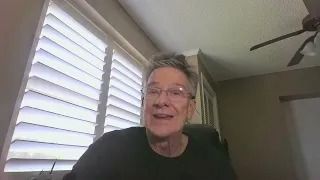The typical down payment is 10% smaller than a year ago Redfin reports that down payment size is shrinking year over year, while the number of all cash buyers is on the rise
The typical homebuyer’s down payment was down 10% year over year in January 2023, according to a report released Wednesday by Redfin.
The report is based on data collected by Redfin from county record across 40 of the most populous metropolitan areas.
Redfin found that the typical U.S. homebuyer made a $42,375 down payment in January, the smallest typical down payment recorded in nearly two years. January’s typical down payment is down 35% from the high recorded in June 2022, but still up 30% compared to pre-pandemic levels.
January was the third straight month in which the median down payment amount posted at an annual decrease.
In addition, the median down payment percentage nationwide was also down year over year in January, dropping from 13.6% a year ago to 10% of the total purchase price of the property. The pandemic peak of 17.5% was recorded in May 2022. According to Redfin, the last time down payment percentages were at this level was in early 2021 — prior to the pandemic real estate boom reaching its zenith.
Of the 40 metros analyzed, down payment percentages were highest in San Francisco (25%), followed by 10 metros, including Anaheim, California; San Jose, California; New York; Oakland, California; Los Angeles; Seattle; San Diego; New Brunswick, New Jersey; Miami; and West Palm Beach, Florida, where the typical homebuyer put down a 20% down payment.
Overall, just two of the metros analyzed reported year over year increases in down payment percentages: Newark, New Jersey, (12.5% in 2022 to 19% in 2023) and San Francisco (23.3% in 2022 to 25% in 2023). Meanwhile, Sacramento posted the largest year-over-year decline in down payment percentage, falling from 20% in January 2022 to 12.4% in January 2023.
Redfin attributed the drop in down payment amount and percentage to the slower housing market, lower home prices, and higher housing costs due to rising mortgage rates.
Most offers on homes written by Redfin agents in January were not part of bidding wars, which differs significantly from 2021 and early 2022. Due to this, buyers no longer need a large down payment to prove their financial stability or to stand out from a crowded playing field.
“One silver lining of high mortgage rates and economic turmoil is that they’ve slowed competition,” Sheharyar Bokhari, Redfin’s senior economist, said in a statement. “That means buyers are often able to purchase a home without facing a bidding war and don’t need to fork over a huge portion of their savings for a down payment to grab sellers’ attention. Today’s buyers are also able to save money in other ways: Nearly half of sellers are offering concessions, like helping pay for a mortgage-rate buydown or covering closing costs, to attract buyers.”
The less competitive market has also resulted in more buyers using FHA and VA loans. In January, 16% of mortgaged home sales used an FHA loan, up from 13.3% a year ago, while the share of mortgaged sales using VA loans rose to 7.5% from 6.1% a year prior.
Detroit saw the highest share of FHA loans at 29.5% of all mortgaged sale and Virginia Beach, Virginia, recorded the highest number of VA loans, at 43.7% of all mortgaged home sales. On the other end of the spectrum, both FHA loans and VA were least common in San Francisco at just 1.3% and 1.0% of all mortgaged home sales, respectively.
With mortgage rates hitting some of their highest levels in decades, buyers are having to allocate more each month to their monthly housing payment budget, reducing what they have available for a down payment. In addition, given the uncertain economic environment, Redfin economists say that some buyers may also simply want to hold on to as much cash as possible.
Finally, although home prices remain well above their pre-pandemic level, home price growth has slowed dramatically, with the National Association of Realtors reporting the first year-over-year median home price decrease for existing home sales in over 130 months.
In addition to smaller down payments, Redfin also noticed a year-over-year uptick in the share of homes paid for in cash, which rose from 29.7% in January 2022 to 32.1% this year. Back in 2021 and early 2022, buyers were using cash offers to beat out the competition, but now, those who can use a cash offer are doing so to avoid the high mortgage rates.
Of the metros analyzed, all-cash purchases were most prevalent in West Palm Beach, where 52.5% of home purchases were made in cash. All-cash purchases were least common in Oakland, making up just 13.9% of all home purchases in January.
Have A Question?
Use the form below and we will give your our expert answers!
Reverse Mortgage Ask A Question
Start Your Loan
with DDA todayYour local Mortgage Broker
Mortgage Broker Largo See our Reviews
Looking for more details? Listen to our extended podcast!
Check out our other helpful videos to learn more about credit and residential mortgages.





